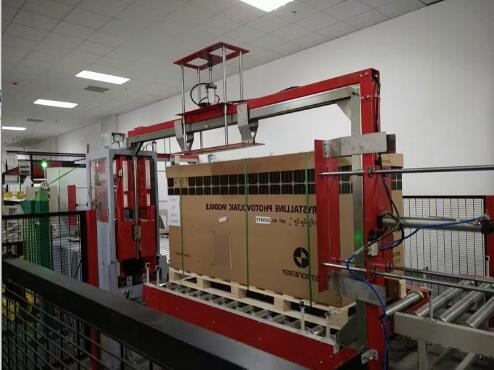Optimizing Wood Product Handling: A Guide to Bundling and Packing Machinery
Efficient handling, storage, and transport are critical factors in the wood products industry. Properly securing bundles of wooden panels, beams, joists, billets, or other processed wood is essential for maintaining product integrity, ensuring safety, and streamlining logistics. Modern bundling and packing machinery offers effective solutions to achieve these goals.
This guide explores common automated methods for bundling and packing wood products, focusing on strapping and stretch wrapping technologies designed to enhance operational efficiency and cost-effectiveness.
Strapping Solutions for Secure Wood Bundles
Strapping is a widely used method for unitizing bundles of wood products, providing stability and making them easier to handle. Automated strapping systems significantly accelerate this process compared to manual methods.

- Functionality: These machines apply plastic or steel straps around a bundle, tension them appropriately, and seal the strap ends.
- System Types: Various configurations exist, including:
- Side-Seal Machines: Models like the Mosca RO-MS or RO-TRS feature side-mounted sealing heads. This design is advantageous as debris (like sawdust or wood chips) falls away from the sealing mechanism, improving reliability in demanding wood processing environments.
- Tandem Systems: For long products like beams or joists, semi-automatic machines such as the Mosca RO-MRI can be configured in tandem. This setup allows for rapid application of two straps simultaneously, significantly increasing throughput (potentially up to 20 bundles per minute depending on the application).
- Benefits: Automated strapping machine solutions offer speed, consistent tensioning, and reduced labor requirements. Features like integrated mechanical testing or specific frame designs help manage dirt and debris inherent in wood processing.
Horizontal Stretch Wrapping for Protection and Containment
For applications requiring not just bundling but also protection from moisture, dirt, or surface damage, horizontal stretch wrapping provides an effective solution. This method is particularly useful for finished wood products or bundles needing complete encapsulation.
- How it Works: Products are conveyed horizontally through a rotating ring carriage that dispenses stretch film, wrapping the bundle as it moves. Advanced systems often include features like top pressure plates to stabilize the load during wrapping and integrated powered conveyors.
- Versatile Wrapping Programs: Machines like the Robopac Compacta S offer programmable wrapping cycles tailored to specific needs:
- Complete Packaging: Fully wraps the entire length of the product.
- End Wrapping: Applies film only to the beginning and end sections.
- Bandaging/Reinforcement: Applies extra layers of film at specific points for added strength or protection.
- Custom Programs: Allows setting precise start and end points for wrapping, number of laps, and reinforcement locations.
- Advantages: Provides excellent load containment, protection against environmental elements, and tamper evidence.
Enhancing Efficiency and Reducing Costs
Implementing automated bundling and packing solutions yields significant operational advantages:
- Cost-Effectiveness: Automation reduces manual labor costs. Efficient use of materials, such as optimized strap tensioning or precise film application, can lower consumable expenses, potentially reducing the cost per bundle significantly.
- Noise Reduction: Thoughtful machine design, such as incorporating insulated wooden stop plates or using quieter drive mechanisms, can help minimize noise levels in the production environment.
- Improved Workflow: Integrating these systems into a production line streamlines the flow from processing to shipping, reducing bottlenecks and handling time.
Selecting the Right System
Choosing the appropriate Wooden Bundle Making and Packing Machine depends on several factors, including:

- Product Type: The size, shape, and fragility of the wood products (panels, beams, joists, billets).
- Required Throughput: The volume of bundles that need to be processed per shift or day.
- Level of Protection: Whether simple unitizing (strapping) or environmental protection (wrapping) is required.
- Degree of Automation: The desired level of integration with existing production lines.
- Budget: The capital investment and ongoing operational costs.
By carefully evaluating these needs, wood product manufacturers can select bundling and packing solutions that enhance efficiency, reduce costs, and ensure their products reach their destination securely and in optimal condition.